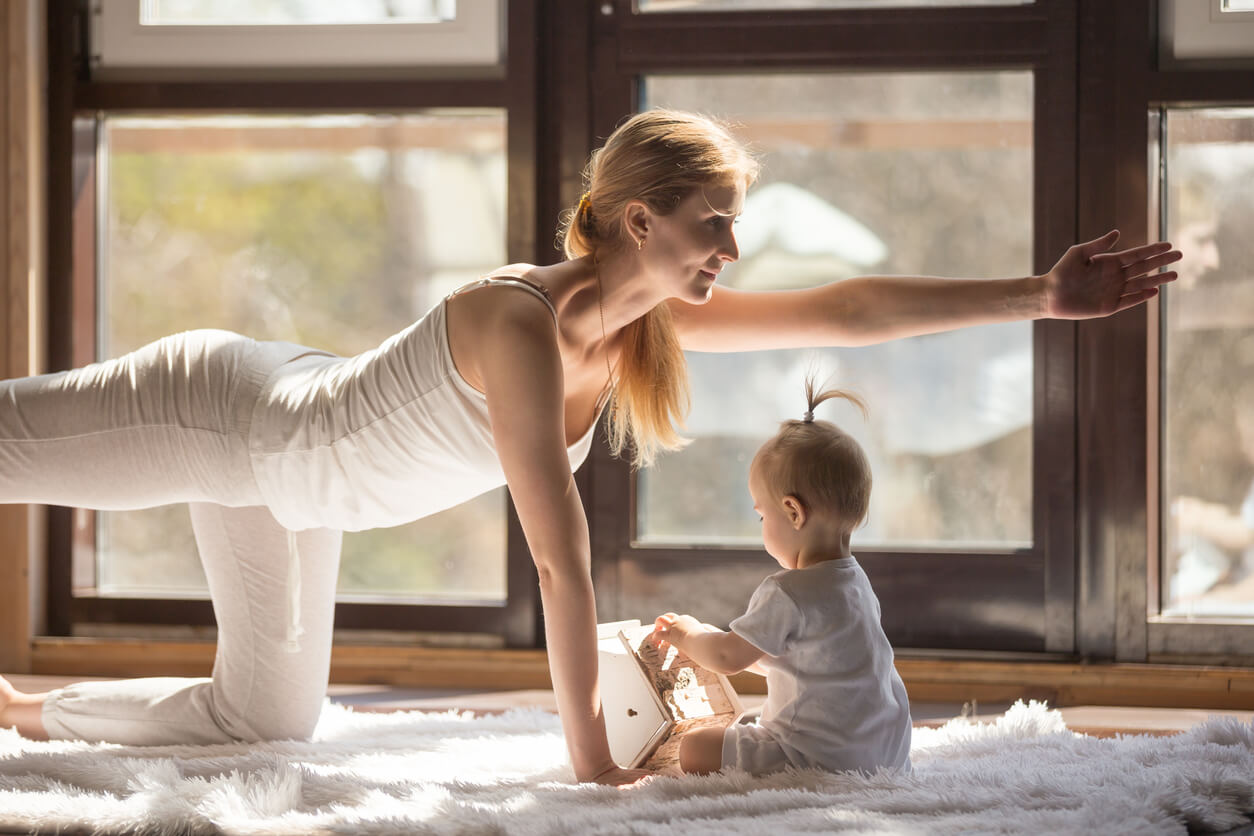Understanding the Vital Roles of Ligaments, Hormones and Exercise After Pregnancy

After spending nine long months nurturing a life in the womb and experiencing the physiological and biomechanical effects of a pregnancy, you are eager to get back to your previous conditioning. But it is not as simple as returning to the exercise program you had before. Your muscles are weaker and unconditioned but, more importantly, your ligaments are also weaker. Ligaments, hormones and exercise play a key role in getting fit and healthy after pregnancy.
Ligaments & Hormones
Ligaments are the unseen factor in restoring your former body shape and condition. Ligaments are in the joints; they both hold the joints together and regulate the tone of the surrounding muscles. During the first trimester, the hormone relaxin is released, which helps relax and stretch the ligaments and muscles to allow growth of the baby and relax the symphysis pubis for entry of your bundle of joy into the world.
Once the baby is born, the presence of relaxin offers a great opportunity to help heal and strengthen your body. Relaxin has both beneficial and undesirable effects on our body, depending on one’s point of view.
| Beneficial | Undesirable |
| relaxes muscles and ligaments | may increase pelvic width & height |
| increases circulation | may degrade articular cartilage |
| decreases inflammation | may increase risk of joint injury |
| may regenerate and repair muscle | may be linked with pelvic pain during late pregnancy |
| may regenerate and prevent fibrosis |
Therefore, relaxin helps prepare the body for growing and nurturing new life, but it can also compromise the joints, especially those of the pelvis. While allowing the pelvic joints to relax and spread, relaxin also has similar effects on ligaments in other joints, such as the ACL in the knee, which can make them more prone to injury. The cartilage in the pelvic and knee joints may also become overtaxed and degenerate to some degree, depending on use.
Once the baby arrives, excess relaxin remains in the body for up to five months; this provides a chance to take advantage of its benefits, while limiting the undesirable effects. At first, gentle exercise should be implemented to increase circulation, which will help increase muscle tone and ligament integrity by bringing relaxin to those tissues. As muscles grow stronger, less pressure is placed on the joints and ligaments. When exercise is done in moderation, relaxin can be very beneficial in helping to heal ligaments and muscle.
Exercise
After giving birth, it is best to keep exercise low-impact to avoid overstressing the joints, which may cause wear on the cartilage and ligaments and result in injury. Keeping the pelvic joints (sacroiliac and pubic) stable and within normal range of motion is the key to minimizing shearing stress on those joints; this can be done with the Serola Sacroiliac Belt. So, at any time and, especially during pregnancy, exercising with the Serola Belt makes a lot of sense. Before beginning any health program, please consult your healthcare provider.
Walking
I recommend starting with walking and maintaining good posture while doing so. Remember, this is a great time to instill proper posture because as your muscles and ligaments tighten up, they will help align your body along the pattern that you establish. Keep your muscles relaxed and swing your arms loosely (this is not a power walk situation). As you walk, feel for the tightness in your muscles and try to relax them; you can do this by pulling your chest up slightly, shoulders back slightly, and walking a little more erect. When you feel your arms swinging more smoothly from the shoulders, you are on the right track.
Stretching
Pelvic tilts strengthen the abdominal muscles and can help reduce back pain. Simply lie down on your back with your knees bent and feet placed on the floor. Flatten your low back to the floor by tightening the abdominal muscles. After a week or two, progress to lifting your shoulders slightly off the floor while keeping eyes toward the ceiling. After another two to three weeks, progress to straightening one leg at a time, and then returning to the bent leg position. Progress to two legs together, out straight and then return. Progress to holding them for 10 seconds, increasing the time slowly.
Swimming
Swimming is typically safe one month after delivery and can be an excellent source of exercise. The buoyancy of the water reduces stress on the cartilage within the joints. Low-impact swimming also helps with weight loss and restoring muscle tone.
Conclusion
Safety continues to be a top priority post-pregnancy. Remember, it’s important to allow your body and pelvic floor time to recover, so avoid risky activities early on such as biking, which puts shearing pressure on the sacroiliac joints through the ischia (sit bones) and running, which can cause jarring to the sacroiliac joints, as well.
Further, there may be no better time to take advantage of the benefits of chiropractic care than when your body is actively seeking realignment post-pregnancy. Chiropractic adjustments and some types of physical therapy manipulation can help align and relieve stress on the joints throughout the body, reduce pressure on the cartilage, even the distribution of force on the ligaments and balance the muscles. Chiropractic care coupled with exercising can be highly beneficial in managing your pain, boosting your energy and mood, and restoring your overall sense of well-being after pregnancy.
To learn more about the benefits of the Serola Belt during and after pregnancy, please see my previous blog post.
Did this article interest you? Read even more articles like this one by going to our main Blog Page. Do you have any suggestions for topics or something you would like to have Dr. Serola elaborate on? Contact us anytime or leave us a comment below.

